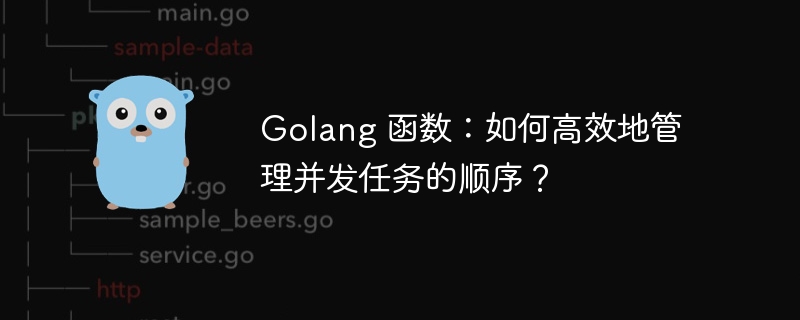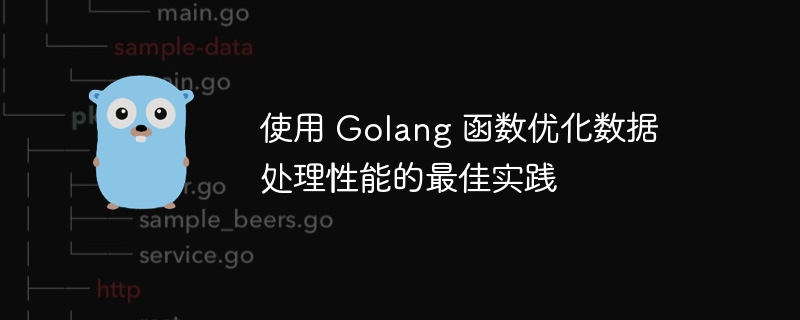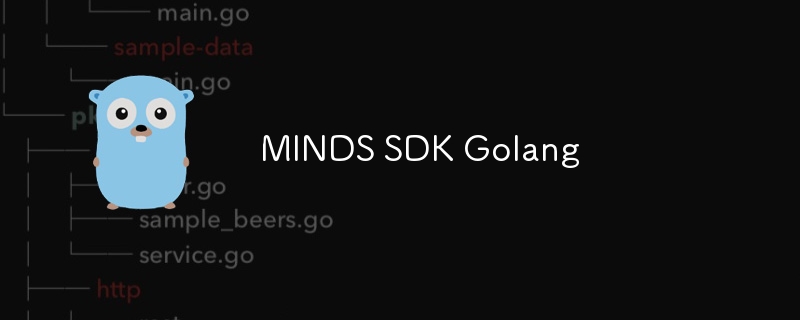go 函数的异步编程范式涉及:goroutine:轻量级并发单元,允许并行代码编写。channel:用于 goroutine 之间通信的管道。context:包含操作信息的容器,用于取消、设置截止或传递错误。实战案例包括使用 go 函数并行执行 http 请求,并在指定时间限制内取消它们。

Go 函数的异步编程范式与应用
异步编程是现代应用程序开发的一种重要方法,它可以让程序在不阻塞主线程的情况下执行长时间或 I/O 密集型操作。Go 语言提供了强大的特性来支持异步编程,包括 goroutine、channel 和上下文。
Goroutine
Goroutine 是 Go 中的轻量级并发单元,类似于线程。与传统线程不同,goroutine 非常轻量级,在创建和管理方面开销很低。Goroutine 被调度到操作系统的线程中执行,允许开发者编写并发代码而无需担心线程管理的复杂性。
package main
import (
"fmt"
"time"
)
func main() {
go func() {
fmt.Println("Hello from goroutine")
}()
time.Sleep(1 * time.Second)
}Channel
Channel 是用于在 goroutine 之间通信的管道。它可以存储特定类型的值,并且具有缓冲容量。发送操作会在通道缓冲区已满时阻塞,而接收操作会在缓冲区为空时阻塞。
立即学习“go语言免费学习笔记(深入)”;
package main
import (
"fmt"
"time"
)
func main() {
ch := make(chan string, 10) // 创建容量为 10 的缓冲通道
go func() {
ch <- "Hello from goroutine" // 将值发送到通道
}()
msg := <-ch // 从通道接收值
fmt.Println(msg)
time.Sleep(1 * time.Second)
}Context
Context 是一个包含有关正在进行操作的信息的对象。它可以传递给 goroutine 以取消操作、设置截止日期或传播错误。
package main
import (
"context"
"fmt"
"time"
)
func main() {
ctx, cancel := context.WithTimeout(context.Background(), 1*time.Second)
defer cancel() // 在 main 函数返回时取消上下文
go func() {
for {
select {
case <-ctx.Done(): // 上下文已取消,停止循环
fmt.Println("Context cancelled")
return
default:
// 继续执行操作
}
}
}()
time.Sleep(2 * time.Second)
}实战案例
以下是一个使用 Go 函数进行异步编程的实战案例:
并行执行 HTTP 请求
package main
import (
"context"
"fmt"
"io"
"net/http"
"time"
)
func main() {
// 创建一个上下文,并在 5 秒后取消它
ctx, cancel := context.WithTimeout(context.Background(), 5*time.Second)
defer cancel()
// 创建一个信道来接收请求的结果
results := make(chan *http.Response)
// 并行执行 HTTP 请求
for _, url := range []string{"http://example.com", "http://example.org"} {
go func(url string) {
req, err := http.NewRequestWithContext(ctx, http.MethodGet, url, nil)
if err != nil {
results <- nil
return
}
resp, err := http.DefaultClient.Do(req)
if err != nil {
results <- nil
return
}
results <- resp
}(url)
}
// 从信道接收结果
for i := 0; i < len([]string{"http://example.com", "http://example.org"}); i++ {
resp := <-results
if resp != nil {
io.Copy(os.Stdout, resp.Body)
}
}
}在这个案例中,我们并行执行 HTTP 请求,并在指定时间内限制它们的执行。如果请求在给定的时间内没有完成,它将被取消。通过使用 Go 函数的异步编程特性,我们可以并行执行这些请求,同时避免阻塞主线程。
以上就是Golang 函数的异步编程范式与应用的详细内容,更多请关注php中文网其它相关文章!






